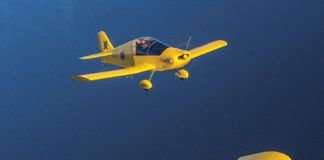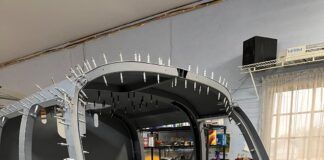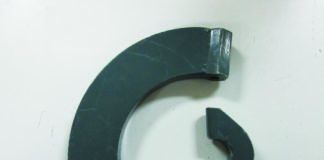As this issue goes to press, images of AirVenture 2011 are receding in the rearview mirror. However, some highlights remain vivid. By far, the outlook of vendors and attendees at the show was surprisingly upbeat. This is not Pollyannaism on my part, and I wasn’t alone in this observation. Sure, there were a few no-hopers (there always are), but they were definitely in the minority. Whatever the reason, people were focused on their plans for the future, and most seem determined to carry on and make the best of it. We picked up a number of ideas for articles at the show, and we’ll be bringing them to you in coming months.
I was eager to meet and/or reconvene with some of our contributors face to face as opposed to communicating with them long distance as I usually do, and I wasn’t disappointed. I came away impressed that, to a person, they are stalwart and genuinely want to make a positive contribution to this publication. We’re lucky to have them. Speaking of which, a new column debuts this month from Steve Ells, formerly on the “Engine Beat” beat. We hope you enjoy reading “Maintenance Matters.”
By Way of Background
On to our cover story this month, and it’s one that has been a long time coming. Marc Cook and Paul Bertorelli visited the Glasair Aviation factory in Arlington, Washington, for a photo session in the fall of 2010. And here we are in the fall of 2011. There are some good reasons for the timing. Glasair’s Sportsman TC was readied for an Oshksoh debut in 2010, its test time flown off, determined to be safe to fly. But cooling systems and fuel trim had not been tested extensively at that time, and the lean-of-peak performance wasn’t where the company wanted it to be.
The problem was that General Aviation Modificatons, Inc., which had spec’d the engine installation for Glasair, wants a max cylinder head temperature of 380, and you can only add so much fuel before running into that limit.
So after Oshkosh 2010, Glasair sent the demo plane back to GAMI to have them help fine-tune the turbo installation. (GAMI had done the same thing on a contract basis for the turbo Cirrus SR-22.) GAMI made minor changes to the cooling flow and baffling, and retarded the ignition timing, and then recommended that the fuel flow be increased. This last bit happened (courtesy of Precision Airmotive) on the morning Marc was there to fly the airplane last July, and was necessary because the engine was generating excessive heat during climb, starting at a deficit before even reaching altitude.
Glasair’s original thinking about the TC, says Marc, was that it would be a good thing for all pilots because a number of Sportsman 2+2 owners had been clamoring for better performance at altitude despite perfectly fine climb performance with either the IO-360 or IO-390 Lycoming. But as Marc so aptly points out in his flight review, turbocharging complicates everything, and the cost is high for the performance gain. I’ll let you read his article to get the rest of the story.
The road of the title is a metaphor for the difficulties common to small companies that aspire to greater heights: an admirable goal in theory, but one that presents significant challenges in practice. Such companies often don’t have the resources to complete the required engineering, which means that they farm it out and pay for the privilege. Ideally, to mate the engine and airframe successfully, extensive in-flight testing would be done, but if there is only one demo plane, taking it offline may be prohibitive. Few outfits have dedicated test pilots who can devote themselves full time to the fine-tuning effort. And even small changes can have a big impact, so testing must be done methodically to isolate specific causes and effects.
The result, in this case, as Marc says, is an airplane that while entirely capable, may ultimately appeal more to those with a specific need than to the “masses.” Still, companies like Glasair are to be commended for doing something new and advancing the industry in the process.
About Those Sub Alerts
Thanks to everyone who has notified us of fraudulent subscription offers. As a heads-up, KITPLANES customer service has moved from Palm Coast, Florida, to Big Sandy, Texas. You can find the complete contact info on our masthead on Page 5. If you receive correspondence from Big Sandy, fear not. We’ll continue to provide the quality customer service you expect from this new location.
Also, we got a name wrong in the September “Learning to Weld” article. The TIG welder pictured on Page 38 is Becky Breckenridge not Bonnie.

![]()
Mary Bernard – The product of two parents with Lockheed Aerospace careers, Mary grew up with aviation, prompting her to pursue pilot training as an adult. Her father, a talented tool-and-die maker and planner, instilled in her an abiding interest in how things are built. For more than a decade, she has been a contributing writer and Managing Editor for KITPLANES.




